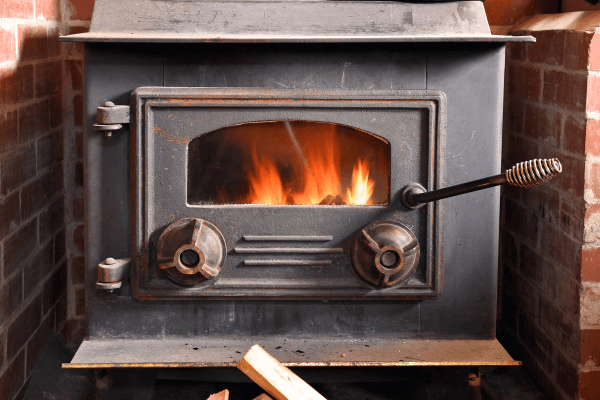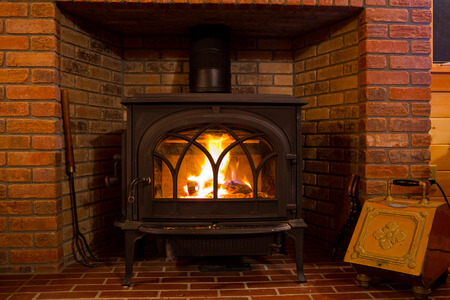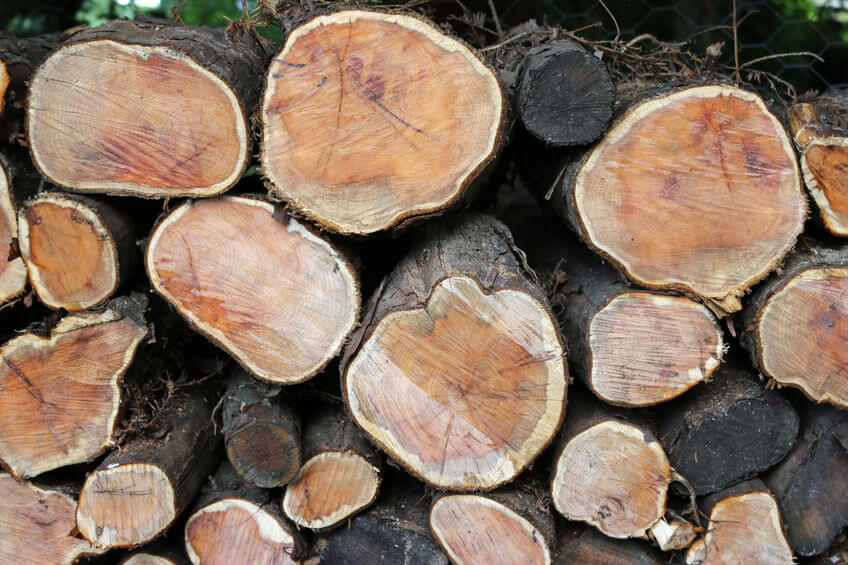- Home
- Chimney Guide
- Condensation in a Wood Stove
Condensation In A Wood Stove
This post may contain affiliate links so I earn a commission.
Condensation in a wood stove is a problem that many people experience during the summer, after your wood stove has been cleaned in the spring.
Typically, when you're done using your stove you give it a good spring cleaning and shut it down until the next fall without giving it much additional thought.
However, if you don't follow a few important steps, it's possible you'll look at your stove in the middle of the summer and find water dripping out from inside the stove.

Recently, a visitor to this site encountered this exact problem. Here's their question......
"I have water buildup inside a Vigilant Stove. Fires have not been burnt inside the stove since April (It's now September meaning the stove has sat undisturbed for about 5 months during the summer).
I saw some water leakage outside of the stove so I opened the door and found water build up inside the stove.
I've checked the pipe and the chimney cap and all were in good shape.
After cleaning up the water, it has not returned but what caused the water to build up inside the stove?
Could running the central AC cause condensation to build up inside the stove?"
Many of us have experienced this problem, but here's the good news........it's actually a pretty easy problem to fix.
To lean more, let's look at a few steps to take to prevent this condensation in a wood stove from coming back.
Condensation In A Wood Stove - Solution
An easy solution to stopping condensation in a wood stove is to unhook the vent pipe and seal it off, and also seal off your outside air kit if you have one.
Humid outside air from the summer that travels through the stove will cause condensation over time, especially when that humid air comes into contact with the cooler inside temperatures caused by an air conditioner.

To seal the pipes you can simply disconnect them and place a bag over the ends, secured with either a rubber band or some tape.
This will block off the outside air.
You can also go to your local home improvement store and look for a rubber plumbing cap which makes a nice tight seal around the pipe.
Once the stove is "plugged" take a container of desiccant and place it in the fire box.
The desiccant is designed to absorb any moisture that makes it into your stove.
You can also try leaving a thin bed of ashes inside your stove.
The ashes will actually absorb the moister and prevent rust from forming inside the fire box.
Then, in the fall when you're ready to start up your stove again, simply remove the ashes and the "plugs" and give the stove a good cleaning and it will be ready for use.
Condensation In A Wood Stove - Overall
Taking the time to seal off your wood burning stove in the spring will help reduce or eliminate many of the problems caused by condensation.

If you've tried these steps and you still find water around your wood stove, it could be a more serious problem involving water leaking into your home where the stove pipe exits.
Over time sealants can degrade allowing room for water to run down along the pipe.
A storm collar is used on the pipe to shed rain and snow away from the flashing where the pipe exits/enters the roof.
On some occasions, driving wind can cause water to do some very strange things.
If you only notice water after a strong storm, the water potentially could be getting past the storm collar and installing a larger storm collar will solve the issue.

About the Author
Obsessed with firewood, Nick is behind over 350+ of Firewood For Life's articles, as well as countless reviews, guides and YouTube videos to help readers like you reduce heating costs and create the perfect fire.


